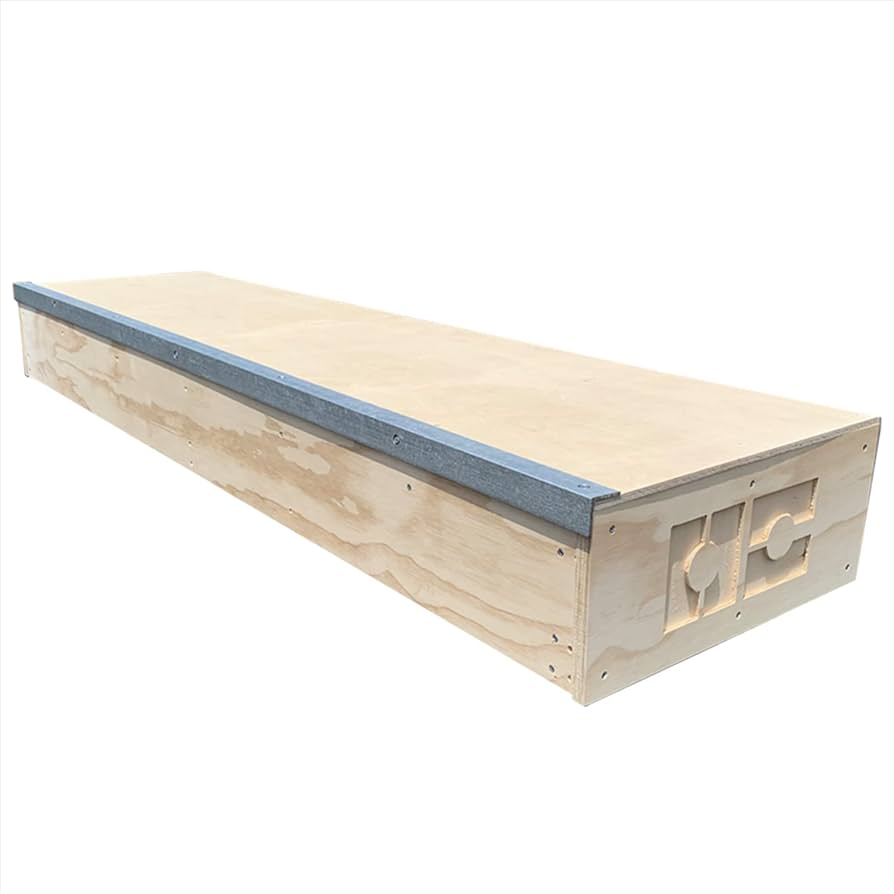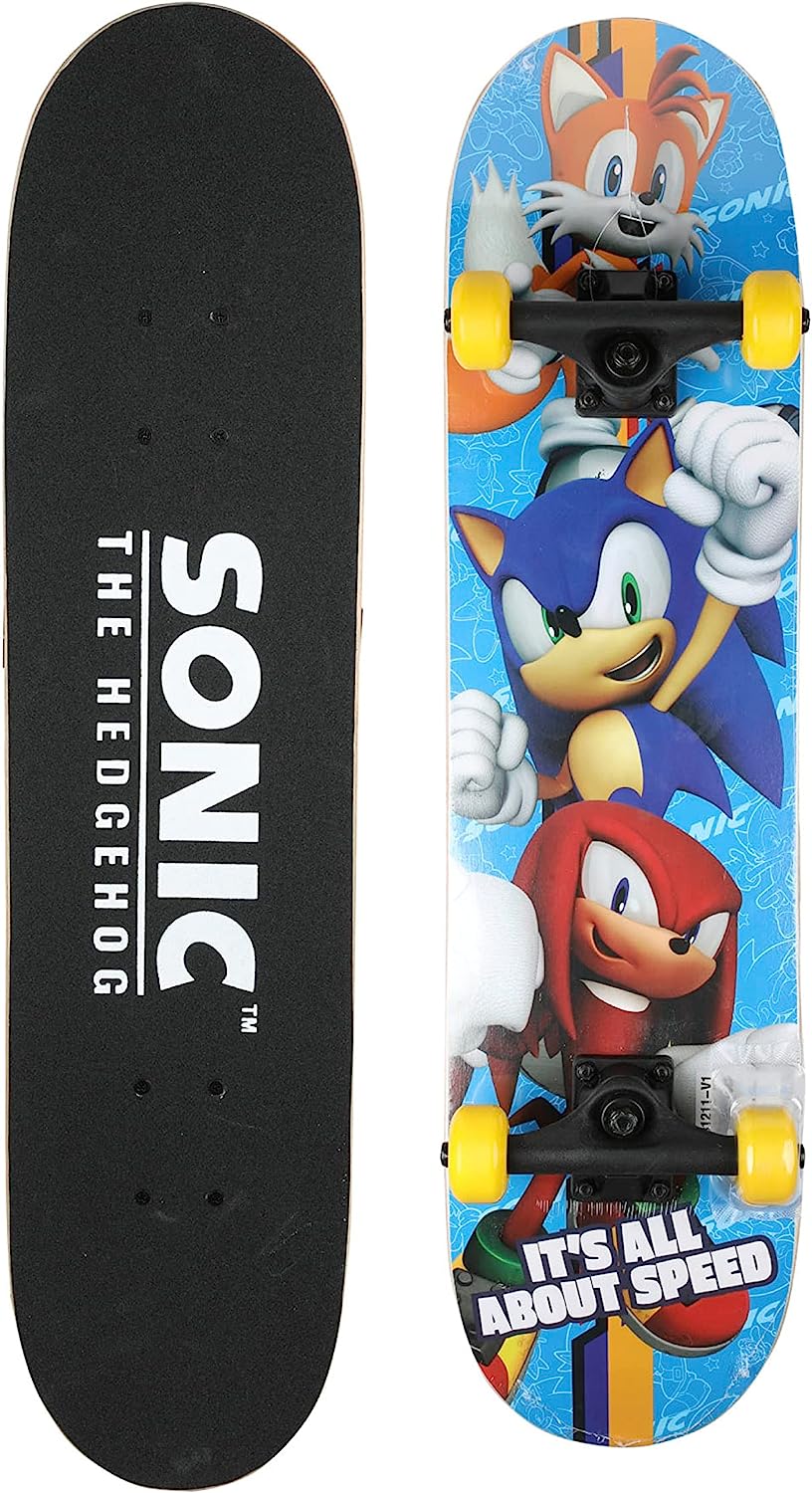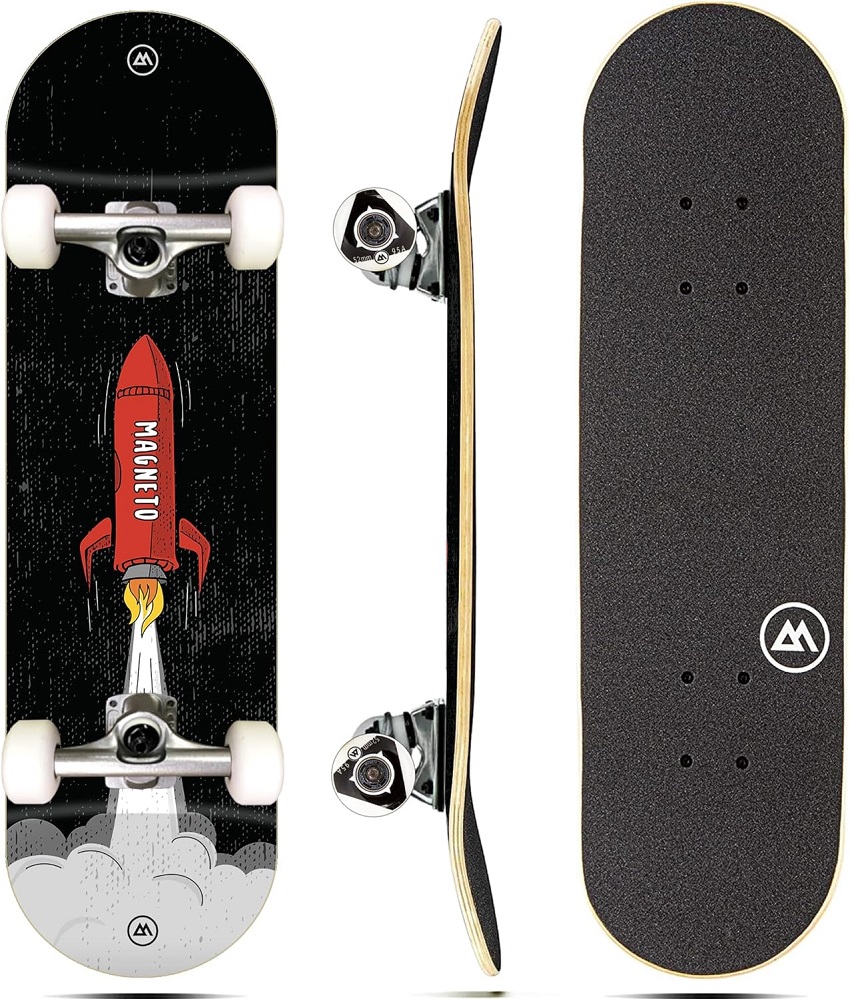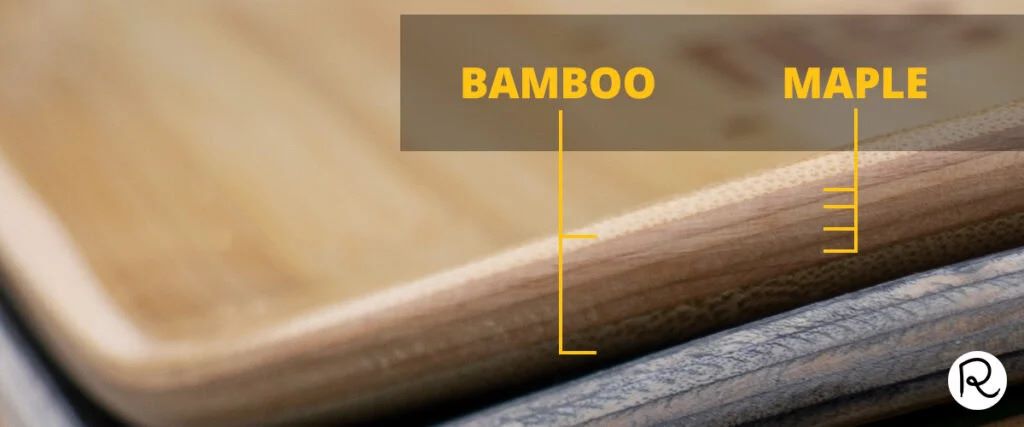A skateboarding rail is a metal or wooden bar designed for grinding and sliding tricks. Skaters align these for challenging maneuvers, enhancing their skills and performance.
Skateboarding rails, an essential feature in skateparks and urban landscapes, allow skateboarders to perform a variety of tricks such as slides and grinds. These rails emulate the ledges and handrails found in street skating, offering a consistent platform for skaters to refine their techniques.
Durability is key, and many rails are constructed from high-grade steel to withstand the repeated impact of skateboarding tricks. Accessibility to skate rails boosts the sport’s popularity, encouraging beginners and experienced riders alike to push the boundaries of what can be achieved on a skateboard. The inclusion of rails in both public skateparks and portable home setups demonstrates their importance in the skateboarding community, bridging the gap between street and park skating for all levels of enthusiasts.
Gear Up For Rail Grind Mastery
Mastering the art of rail grinding in skateboarding requires precision, balance, and the right equipment. Whether you’re a seasoned pro or just starting out, setting yourself up for success means gearing up with the appropriate skateboard setup and protective gear. Let’s dive into the essentials needed to tackle those grinds with confidence and style.
Importance Of The Right Skateboard Setup
Your skateboard is your trusty steed in the kingdom of rails, and customizing it for rail grinding is crucial. The right setup ensures optimal performance and safety when you’re sliding down those rails. Here’s what you need to focus on:
- Truck tightness: Tight trucks provide better stability for grinds.
- Wheels: Smaller, harder wheels are ideal for maintaining speed and smoothness.
- Deck width: A wider deck can offer more stability and surface area for balance.
Essential Protective Gear For Grinding
Rail grinding can be exhilarating, yet it poses risks. Dressing in the right protective gear minimizes the chance of injury, allowing you to skate another day. Every skater should have:
| Gear Type | Reason for Use |
|---|---|
| Helmet | Protects your head during falls. |
| Knee Pads | Cushions your knees during impacts. |
| Wrist Guards | Supports wrists on landings. |
| Elbow Pads | Prevents elbow scrapes and bruises. |
Ideal Footwear For Support And Grip
The bond between a skater and their board heavily depends on their choice of footwear. For rail grinding, look for shoes that provide:
- Ample support to prevent ankle injuries.
- Excellent grip for staying on the board.
- Durable construction to withstand the wear and tear of skating.
Quality skate shoes can make all the difference in your performance and the longevity of your skate sessions. Select shoes designed specifically for skateboarding, with reinforced side panels and cushioned soles for enhanced comfort and protection.
Pre-grind Techniques To Master
Before you slide into the world of grinding rails on your skateboard, mastering a few essential pre-grind techniques is pivotal. These foundational skills are the building blocks that will enable you to approach any skateboarding rail with flair and precision. Whether you’re new to the skatepark or looking to improve your grind game, honing these techniques can elevate your performance and ensure your attempts are both successful and safe. Let’s dive into the key practices you should focus on before hitting the rails.
Building Balance And Board Control
Before attempting your first grind, having exceptional balance and board control is non-negotiable. Skateboarding is a physical conversation between you and your board, and understanding this dynamic is fundamental to nailing grinds. To build your balance:
- Start with stationary exercises: Practice standing on your board with both feet in various positions and shift your weight from side to side without losing your footing.
- Roll around: Skate in different stances and at various speeds. Try carving and cutting across ramps to get a feel for how your board reacts to changes in your body position.
- Manual practice: Training to manually helps improve your balance on the back wheels, crucial for approaching and exiting grinds.
Approaching The Rail With Confidence
The approach dictates the success of your grind. A confident entry sets the tone and can mean the difference between sticking your trick and bailing. Steps to ensure a confident approach include:
- Visualize the trick before you attempt it, developing a clear image in your mind of each step in the process.
- Familiarize yourself with the rail. Walk around it, touch it, and if possible, watch others grind it to understand how it responds to contact.
- Start with a run-up. Keep your pace consistent and your eyes on the entry point, making the necessary adjustments to your speed.
Foot Placement For Various Grind Tricks
Different grinds require unique foot placements. Understanding where to place your feet is key to executing grinds with precision. For example:
| Grind Trick | Front Foot | Back Foot |
|---|---|---|
| 50-50 Grind | Centered over front truck bolts | Centered over back truck bolts |
| 5-0 Grind | Just behind front bolts or as comfortable | On tail, with pressure applied for lift |
| Nosegrind | On nose, with pressure applied for lift | Slightly hanging off or just above the back bolts |
Understanding these positions will lead to clearer execution and greater consistency in your grinding skills. Remember to practice shifting your feet while riding to adjust to the correct positions seamlessly.
Fine-tuning Your Stance And Timing
Success in skateboarding rail tricks hinges not only on courage and skill but also on the intricate dance of fine-tuning your stance and timing. The right position sets the stage for that perfect grind, while precise timing ensures a clean landing. Elevate your rail game with these essential tips on mastering the basics that will guide you to skateboarding glory.
Perfecting The Ollie Onto Rails
Launching onto a rail begins with the quintessential ollie. It’s your first step to dominating the skate park. Execute this foundational move flawlessly by:
- Aligning your feet correctly on the skateboard; your front foot near the middle and back foot on the tail.
- Practicing the pop and drag motion to get consistent air.
- Visualizing the maneuver in your mind before attempting it.
Remember: It’s about muscle memory. The more you practice, the better your body gets at responding to the rails with precision.
Timing Your Jumps And Landings
Pairing an ollie with impeccable timing is non-negotiable in skateboarding. Exceptional timing can mean the difference between landing a trick smoothly or taking a spill. Master your jumps and landings by:
- Observing the rail as you approach to gauge the perfect takeoff point.
- Focusing on the end of the rail to time your exit strategy; this helps you to prepare to dismount at the right moment.
- Practicing these movements in varying situations to adapt effectively to different rail types and heights.
Body Posture During Rail Tricks
During rail tricks, your body’s posture is crucial for maintaining balance and control. Optimal posture translates into fluid movements and stylish executions. Ensure you:
| Part of Body | Tips for Ideal Posture |
|---|---|
| Head | Keep your head up and eyes looking forward where you’re going. |
| Shoulders | Align your shoulders with your board, turning them only as you jump on and off the rail. |
| Arms | Use your arms to balance but avoid flailing; keep them controlled and steady. |
| Legs | Bend your knees to absorb the impact and maintain a low center of gravity. |
Each element of your posture works in harmony to keep you steady. It’s the subtleties in your movements that make or break a trick.

Credit: thinkempire.com
Variations Of The Board Grind
Skateboarding offers a plethora of tricks and stunts, with board grinds standing out as one of the most thrilling aspects of street skating. A grind involves sliding on the trucks of the skateboard along a surface such as a rail or ledge. Riders around the world strive to master various board grinds, adding their unique flair and style to this cornerstone of skateboarding technique. Let’s delve into some popular variations.
The 50-50 Grind Dissected
The 50-50 grind is the quintessential grind trick, ideal for those honing their skills. This grind necessitates balancing on both trucks as you slide along the edge of a rail or ramp. To execute a 50-50 grind, approach the rail with moderate speed, ollie up, and aim to land with both trucks evenly on the rail. Keeping your weight centered is crucial to maintain balance throughout the slide. Your success in the 50-50 grind paves the way for more complex variations.
Mastering The 5-0 And Nose Grind
Advancing in board grinds, the 5-0 and nose grind emerge as technical maneuvers that challenge even seasoned skaters. For the 5-0 grind, the technique involves balancing solely on the back truck, resembling a manual, but on a rail. Your body weight plays a pivotal role, shifting slightly towards the tail to maintain the grind without tipping over. Nose grinds flip the script, using the front truck to glide along the rail, requiring an adept shift of weight to the nose of the board. Practice in both stances—regular and switch—ensures versatility and control in your grind repertoire.
Techniques For The Crooked Grind
Among the more stylish grinds, the crooked grind, or ‘crook,’ involves grinding on just the front truck, with the tail of the skateboard kicked out to one side, hence the ‘crooked’ descriptor. Precision in aim and balance is paramount. Riders must approach the rail at an angle, ollie, and lock the front truck onto the rail while pressing down on the nose. The perfect crooked grind requires the board to be angled correctly, the body’s weight distribution fine-tuned, and a smooth dismount to exit the trick.
Pro tip: Start with low, flat rails and gradually progress to higher and more angled rails as you gain confidence and control in these grind variations. Protective gear, including a helmet, is essential for safe practice.
From Basics To Technical Combos
Embarking on the journey from skateboarding basics to mastering technical combos requires dedication, precision, and creativity, especially when it comes to rail tricks. Rails, the very backbone of street skateboarding, provide endless opportunities for skaters to showcase their skills. Whether you’re just starting out or are looking to elevate your game, understanding the progression from simple grinds to intricate combinations on the rail is crucial. Get ready to glide through the art of rail skateboarding and unlock the secrets to impressive and consistent grinding performances.
Transitioning Between Grind Variations
Grind variations are the essence of rail skateboarding. A successful grind relies on smooth transitions and a repertoire of moves. Transitioning between different grinds like a 50-50, 5-0, or a Smith grind involves balance and the ability to swiftly adjust your footing. Start by:
- Mastering each grind individually, ensures you’re comfortable and confident in your execution.
- Gradually link them together by practicing the transitions on a lower-risk setup, such as a curb or a smaller rail.
- Use your shoulders and hips to guide the direction of your board and maintain control.
As you gain more experience, begin to challenge yourself by increasing the speed and complexity of your transitions.
Combining Flips Into Your Rail Tricks
Integrating flips with rail tricks adds an extra layer of flair and difficulty that can truly captivate an audience. Achieving the perfect blend involves:
- Timing your ollie and flip trick precisely to ensure your board meets the rail exactly when and where you intend.
- Keep your center of gravity centered over the rail to avoid tipping or bailing mid-trick.
- Maintaining momentum and smoothness as you execute the flip and prepare for the grind.
Practicing kickflips and heel flips into a grind, such as a crooked or a nose blunt, can significantly diversify your skill set.
Advanced Tips For Consistent Grinding Performance
Consistent grinding performance on rails requires more than just practice; it demands a strategic approach. Here are some advanced tips:
| Tip | Description |
|---|---|
| Proper Foot Position | Ensure your feet are positioned to allow quick adjustments for balance and transition between tricks. |
| Visualize the Trick | Before attempting, visualize the entire sequence to mentally prepare for the execution. |
| Focused Practice Sessions | Isolate specific components of the grind and work on them independently to reinforce muscle memory. |
| Adjust Your Speed | Experiment with different speeds to find the optimal pace for each trick combination. |
Recording your sessions and reviewing footage can also help identify areas for improvement and track your progression.
Frequently Asked Questions For Skateboarding Rail
What Is A Skateboarding Rail?
A skateboarding rail is a metal or wooden bar used by skateboarders to perform grinds and slides. It’s a common feature in skate parks and street skateboarding, allowing for various tricks and skills development.
How Do You Install A Skate Rail?
To install a skate rail, secure it on a flat, stable surface. Use bolts for permanent placement or weights for a temporary setup. Ensure it’s level and firmly fastened to prevent accidents during use.
What Materials Are Skate Rails Made Of?
Skate rails are typically made of durable materials like steel for strength and longevity. Other options include aluminum for lightness, and some have a plastic coating for smoother rides.
How To Maintain A Skateboarding Rail?
Maintain a skate rail by regularly checking for rust or damage, and applying lubricant if needed. Tighten any loose bolts and replace worn parts to keep the rail safe and functional.
Conclusion
Skateboarding rails offer an exciting challenge for riders of all levels. Mastering them can elevate your skills and style, introducing new thrills to each session. As you practice and progress, remember to prioritize safety along with your tricks. Hit the skatepark and show those rails who’s boss – your next grind could be your best yet.
Keep skating, keep evolving.




